Introduction
Prednisone is significant in veterinary medicine for dogs. It’s a powerful corticosteroid that helps manage various health issues. Understanding how prednisone affects your pet is crucial for responsible pet ownership. If you want to be prepared for any pet emergencies, consider investing in a Pet First Aid Kit. It’s essential for ensuring that your furry friend receives prompt care in case of an accident or injury.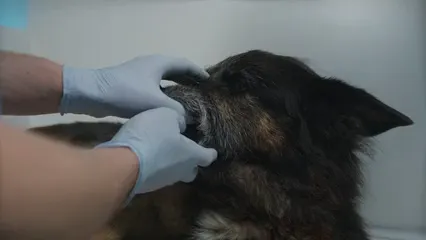
Summary and Overview
Prednisone is a synthetic corticosteroid that mimics cortisol, a hormone naturally produced in dogs. It works primarily as an anti-inflammatory and immunosuppressant. This medication is often prescribed for conditions like allergies, arthritis, and autoimmune diseases. By reducing inflammation, prednisone helps alleviate pain and discomfort in your furry friend. Veterinary guidance is essential when administering prednisone. The dosage and duration should always be tailored to your dog’s specific needs. Improper use can lead to serious side effects, so regular veterinary check-ups are crucial to ensure safe administration.What is Prednisone?
Definition and Mechanism of Action
Prednisone is a synthetic corticosteroid. It’s similar to cortisol, a hormone produced by the adrenal glands. When given to dogs, prednisone suppresses inflammatory responses and immune reactions. This makes it effective for treating various conditions. Once ingested, prednisone travels to the liver. There, it converts into prednisolone, its active form. This conversion is vital for its effectiveness. In dogs with liver issues, veterinarians may prescribe prednisolone directly to ensure the desired action without additional strain on the liver. Speaking of keeping your dog healthy, consider a Dog Vitamins and Supplements to boost their immune system while they are on medication. A healthy dog is a happy dog!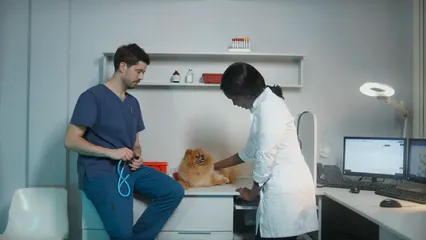
Conditions Treated with Prednisone
Common Uses
Prednisone is prescribed for various health issues in dogs. One of its primary functions is to manage allergic reactions. If your dog suffers from itching, hives, or swelling, prednisone can provide relief. It effectively reduces inflammation and calms the immune response. Inflammatory conditions are another area where prednisone shines. It’s commonly used for arthritis, helping to reduce joint pain and stiffness. Skin diseases, such as dermatitis, also benefit from this medication. By minimizing inflammation, prednisone helps your dog feel more comfortable in their skin. For autoimmune diseases like lupus or inflammatory bowel disease (IBD), prednisone acts as an essential treatment. It suppresses the immune system, preventing it from attacking the body’s tissues. This is crucial for managing these chronic conditions. In cancer treatment, prednisone plays a vital role. It’s often used in protocols for conditions like lymphoma and mast cell tumors. It helps reduce tumor size and manage symptoms, improving your dog’s quality of life. Finally, prednisone is invaluable in emergency situations. Whether it’s anaphylaxis from an allergic reaction or spinal cord trauma, this medication can stabilize your dog’s condition. Its quick action makes it a go-to choice for urgent care. And while you’re at it, ensure your dog is safe during water activities with a Dog Life Jacket. It’s perfect for those fun summer outings on the lake!
If your dog suffers from joint pain or arthritis, you may also consider looking into best supplements for dogs with joint pain and arthritis for additional relief options.
Dosage and Administration
Recommended Dosage Guidelines
Determining the right dosage of prednisone for your dog depends on multiple factors. These include your dog’s weight, overall health, and the specific condition being treated. Generally, a veterinarian will calculate the dosage based on these parameters to ensure safety and efficacy. Common dosing ranges vary. For allergic reactions or inflammatory conditions, the typical dose is 0.5 to 1 mg per kilogram of body weight per day. In cases of autoimmune diseases, higher doses between 2 to 4 mg per kilogram may be prescribed. It’s crucial to follow your veterinarian’s instructions closely. Always administer prednisone with food to minimize gastrointestinal upset. Never skip doses or abruptly stop the medication. Doing so can lead to withdrawal symptoms or a flare-up of your dog’s condition. If you ever miss a dose, give it as soon as you remember unless it’s almost time for the next one. Then, skip the missed dose and continue as directed. To make your dog’s meal times hassle-free, consider using an Dog Bowls with Non-Slip Base. They keep the bowl in place, so your dog can eat comfortably without making a mess!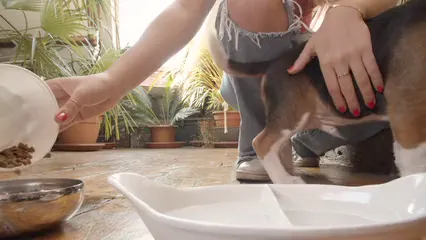
Missed Dose and Tapering
If your dog misses a dose of prednisone, give it as soon as you remember. However, if it’s almost time for the next dose, skip the missed one. Never double up to make up for a missed dose. Tapering off prednisone is crucial. Stopping suddenly can lead to withdrawal symptoms. Gradually reducing the dose helps your dog’s body adjust. This step is especially important after long-term use to maintain balance in hormonal levels.
Side Effects of Prednisone
Prednisone can cause several common side effects in dogs. Increased thirst and urination are frequent complaints. You might notice your dog drinking more water than usual. An increased appetite often leads to weight gain. While some dogs may seem more active, others might experience lethargy. Changes in behavior, like increased panting or restlessness, are also possible. Gastrointestinal issues can occur, including vomiting and diarrhea. If you observe these symptoms, report them to your veterinarian. Monitoring your dog’s reactions is essential, as side effects can vary in severity. To help manage your dog’s grooming needs and reduce shedding, consider Pet Grooming Gloves. They make grooming a breeze while keeping your house fur-free!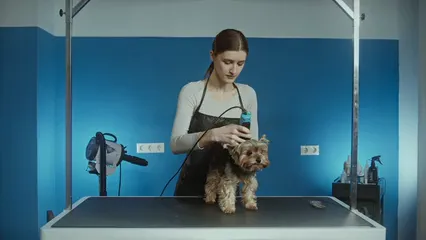
Long-Term Risks
Using prednisone for an extended period can pose significant risks to your dog. One major concern is the development of Cushing’s disease. This condition occurs when the body produces too much cortisol, often triggered by long-term steroid use. Symptoms include increased thirst, urination, and a pot-bellied appearance. Another risk is diabetes. Prolonged prednisone use can disrupt your dog’s insulin production, leading to elevated blood sugar levels. If your dog shows signs like excessive thirst or frequent urination, consult your vet. Muscle wasting is also a possibility with long-term use. Your dog may lose muscle tone and strength, making activities more challenging. Additionally, prednisone can delay wound healing. If your dog gets injured while on this medication, recovery might take longer than expected. Finally, long-term use can weaken the immune system. This makes your dog more vulnerable to infections. Regular veterinary check-ups are crucial to monitor your dog’s health while on prednisone.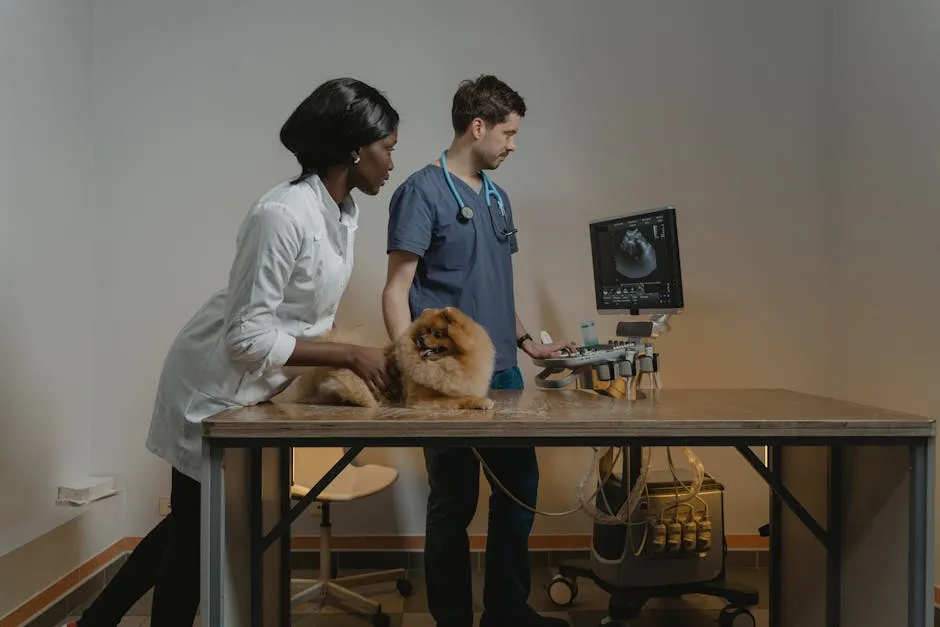
Precautions and Contraindications
There are specific scenarios where prednisone should not be used in dogs. For instance, if your dog has a viral or fungal infection, administering prednisone can worsen their condition. The drug suppresses the immune system, making it harder for the body to fight off infections. Dogs with diabetes should also avoid prednisone, as it can worsen their blood sugar control. Similarly, if your dog has kidney disease or ulcers, the medication may exacerbate these issues. Pregnant or nursing dogs should not receive prednisone without veterinary approval. The medication can affect hormonal balance, posing risks to both the mother and her puppies. Always discuss your dog’s medical history with your vet before starting prednisone to ensure their safety. To keep your dog comfortable during travel, a Dog Carrier Backpack can be a fantastic investment. It’s perfect for hikes or trips to the vet, ensuring your pup travels in style and comfort!
Interactions with Other Medications
Drug Interactions
When your dog is on prednisone, it’s vital to be aware of potential drug interactions. One significant concern is with nonsteroidal anti-inflammatory drugs (NSAIDs). Combining these medications can increase the risk of gastrointestinal ulcers and bleeding. Always inform your vet if your dog is on NSAIDs alongside prednisone. Other medications, such as certain antibiotics, diuretics, and insulin, may also interact negatively with prednisone. For example, insulin’s effectiveness might be diminished when used with prednisone, potentially affecting a diabetic dog’s blood sugar control. Always consult your veterinarian about all medications your dog is taking to avoid dangerous interactions. To keep your dog’s dental health in check, don’t forget about a Dog Toothbrush and Toothpaste. Regular brushing can help prevent dental issues that could complicate your dog’s health while on medication.
Conclusion
In summary, prednisone can be an effective treatment for various conditions in dogs, but it comes with risks, particularly regarding drug interactions. Always seek veterinary guidance when using prednisone. Your vet can help determine the appropriate dosage and monitor your dog for any potential side effects or interactions. Responsible use ensures your dog can benefit from this medication safely and effectively.
To enhance your dog’s playtime, an Interactive Dog Toy can keep them engaged and entertained. It’s a great way to channel their energy into something fun and productive!
Please let us know what you think about our content by leaving a comment down below!
Thank you for reading till here 🙂
All images from Pexels





